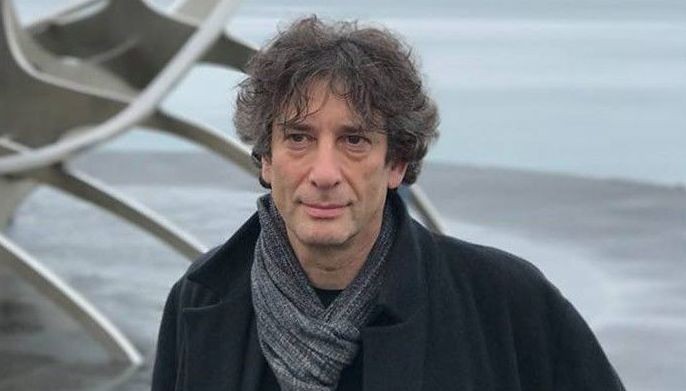Cage against the machine
October 24, 2005 | 12:00am
 I grew up in a house that had an ancient turntable (Technics, I’m sure) and its contemporary – mahogany speakers that were state-of-the-art in the Seventies, probably born in the years between the reigns of Richard Nixon and punk rock, when buffers and tweeters were bywords. Music was always wafting from those speakers. My brother Dennis would bring home stashes of vinyls and play them all afternoon. Ah, the warm analog sound, the symphony of skips and scratches.
I grew up in a house that had an ancient turntable (Technics, I’m sure) and its contemporary – mahogany speakers that were state-of-the-art in the Seventies, probably born in the years between the reigns of Richard Nixon and punk rock, when buffers and tweeters were bywords. Music was always wafting from those speakers. My brother Dennis would bring home stashes of vinyls and play them all afternoon. Ah, the warm analog sound, the symphony of skips and scratches.
They say that memory is constantly shifting, and memories are sometimes revisited through the magic of self-delusion. But I could still distinctly remember how music (rock, occasional jazz) affected me instantly. Maybe it was the way Robert Plant of Led Zeppelin enunciates the words, "Does anybody remember laughter?" in the live version of Stairway to Heaven before drummer John Bonham comes in with his thunderous rolls. Jimmy Page playing violin with his Gibson, John Paul Jones playing a funereal dirge on the church organ, Plant singing about everything from wielding the hammer of the gods to squeezing one’s lemon – each element in Led Zeppelin records was a key to a world of mystery and mayhem.
The bands that I started to get into – like Black Sabbath and Deep Purple – weren’t about screaming like Tarzan Boy, or observing how boys do fall in love (which my friends at that time sang with impunity, complete with gestures). The musicians I dug at that time had darker, deeper, more alluring stories to share.
Even The Beatles… Most of the fabulous four’s songs are about life and love in general (She Loves You blah blah blah), the everyday gospel according to John, Paul, George and Ringo. But there are tracks that communicated surreally and psychedelically. I am he as you are he as you are me and we are all together. They gave me names and places to remember (Eleanor Rigby, Maggie May, Prudence, Strawberry Fields, Penny Lane) and diamonds in my marmalade sky. Musically, it wasn’t always a Ringo backbeat with jinglingly weepy guitars. "Sgt. Pepper’s Lonely Hearts Club Band" was a revolution in the cassette head.
The key track A Day In The Life is an epic trip through the wires as Lennon announces, "I read the news today, oh boy…" For a kid like me at that time, it was a pop song – a damn good pop song at that. Although I was bugged by the dissonant winds and strings that swell after John sings, "I’d love to turn you on." Everything concludes in a crashing crescendo, with three Beatles and two assistants hitting a D chord on several pianos. Duhnnnnnnnnnn.
There was a name for this type of musical approach, but I wasn’t aware of it.
Asong in "The White Album" made me curious: Revolution No. 9 with its montage of loops, orchestral bursts, overdubs, samples and cryptic phrases like "Lock that gate" and "Number nine, number nine…" Julia the ocean child goes down the rabbit hole. Its categorization eluded me.
Years later. The Technics was retired and replaced by a succession of CD players – clearer, cleaner, crispier, less soul. The tombstone speakers succumbed to termite infestation. After hours and hours spent listening to records and CDs of different genres and sub-genres – rock, pop, electro-pop, ska, reggae, new wave, punk, Britpop, grunge, progressive rock, nü-garage, and other labels that ultimately don’t do jack shit for the music. "Turn and face the strange," David Bowie once sang.
I managed to get into jazz after being disenchanted with rock when pathetic rap metal was the trend (never trust a Fred Durst fan). I began the bebop-to-cool-to-modal-to-fusion odyssey with the familiar titans at first (John Coltrane, Miles Davis, Bill Evans), and eventually those who straddled the margins, the scourers of the underground, the bop kabbalists.
Pianist Cecil Taylor ruminated on the piano like a cosmologist with books on black math. Circle deftly navigated its rune-like, circuitous instrumentals. Sun Ra and his Arkestra played intergalactic harmonies, taking listeners to infinity and beyond. And harmolodicist Ornette Coleman freed jazz from oppressive boundaries.
Coleman composed Free Jazz, the sonic equivalent of a Jackson Pollock painting – spontaneous, transcendent, wild, free, fiery, shapeless, stubborn and proud. The tune (which fills two sides of the vinyl) announced the death of jazz and its glorious rebirth. Coleman and company (Don Cherry, Charlie Haden, etc.) made music unpredictable, mysterious and free again.
Speaking of pioneers… One day, I popped my first John Cage CD and it brought back memories of my first encounter with A Day In The Life. Plop! That was the sound of this music nut meeting the avant-gardeners of avant-garde.
Cage is the composer responsible for Sonatas and Interludes for Prepared Piano, among other iconoclastic classics. How do you prepare a piano, by the way? Well, according to a detailed diagram, you put objects such as screws, rubber bands, coins or screwdrivers on or between the piano strings, which produce "a quiet beautiful, muted, misted sound, like an imaginary oriental percussion instrument."
He also wrote the controversial 4’33". NME journalist Paul Morley in his book Words and Music says, "The composition is divided into three movements. All of the notes are silent. It requires four minutes, 33 seconds to perform. (The musician) uses his own private means to keep a straight face…"
Cage’s philosophized about the piece: "I have nothing to say, and I am saying it, and that is poetry..."
Pianist David Tudor performed it at the Black Mountain College in Woodstock in 1952. The audience watched Tudor play "silence" so eloquently and profoundly. Stunned, they promptly cheered by clapping with one hand. What a loud gig. After Cage, the world never listened to silence the same way.
John Lennon did the same thing with his Two Minutes of Silence, which was covered by Soundgarden in "Ultramega OK," reducing it to just one minute.People writing songs that voices never share.
There are other crazy diamonds who blurred the lines between music and anti-music.
Erik Satie wrote a manifesto about "Furniture Music," which has no goal and fills the same role as light and heat. "It wasn’t meant to attract undue attention to itself," Morley says of the genre that was also called "Acoustic Floor Tiling." The eccentric composer wrote pieces that were merely musical wallpaper, and when he played them he’d shout to the audience, "Don’t listen!"
Former Roxy Music synthesizer whiz Brian Eno, sidelined in a hospital, would create ambient music, which was probably inspired by Satie. "Music for Airports," "Music for Films," and "Another Green World" would blow minds – slowly but surely. As well as cure insomniacs (according to Scott and Therese Garceau).
Terry Riley invented the time-lag accumulator tape-delay system used to create loops. He wrote In C, a few bars of music played by an increasing number of instruments until a wall of sound is created – minimalist hypnotic shit that rocks.
Karlheinz Stockhausen is both a shaman and a showman. He wrote Gesang der Jünglinge, a collage of electronic sounds pricked by the voice of a young boy. He also created a ceremonial for four costumed musicians and a synthesized tape titled Sirius. Costumed musicians who were neither KISS nor Slipknot.
Edgard Varese – who influenced Frank Zappa (another electric Don Quixote) – disliked the term "music," preferring "organized sound" instead. He wrote Deserts, which includes tapes of factory and sawmill noises meant to be played back during the performance. This was arguably the first use of sampling, thus Varese is touted as the father of electronic music. The composition deals with physical deserts (sand, snow, outer space) and those in the minds of man – places of essential loneliness. We’ve all been there.
Another Varese piece, Hyperprism, caused a riot in 1923. Must be because of the siren, lion’s roar and other traditional sound sources that are part of the piece.
Steve Reich used brainwaves and plug-in toys to generate music; wired up skin to produce sound; and inserted microphones into the mouth of a small milk bottle, a seashell, a vase and an empty ostrich egg. He even amplified clocks. Reich said, "I wanted to make a work in which the performer could slow down time, stopping it, if possible, simply by thinking."
Music, anti-music, music as a molotov cocktail to dead ears – turn it up as long as it turns you on. As long as organized sound can help us explain away our existential anguish and allow us to climb our own stairways to heaven.
BrandSpace Articles
<
>



















